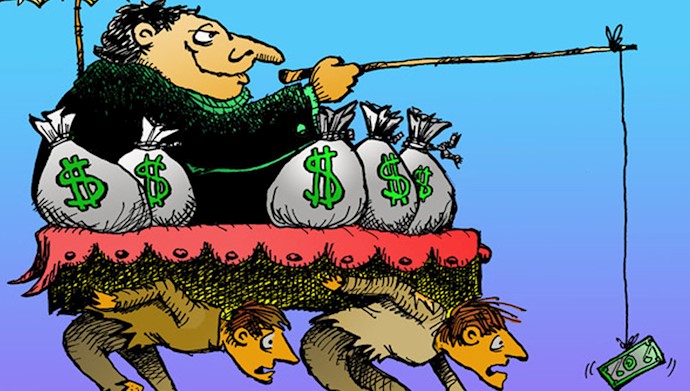Analysis by PMOI/MEK
Iran, June 30, 2019 – While the Iranian economy is on the fast lane towards total implosion, the horrific picture of the rift between the rich and the poor is showing itself more than ever before.
Alef website writes: “A lack of employment opportunities, unequal distribution of opportunities, monopolies, benefits that were given to ‘close’ individuals, and vast rifts in income levels have increasingly deepened the distance between the circle of power and riches and the middle class and poor people of the society.”
“Some believe economic inequality in Iran is so vast that our country is on the eve of becoming a second ‘São Paulo’, where a group live in paradise with the utmost riches and facilities, while the rest are let loose in the hell of poverty like the doomed,” the state-run website further writes.
According to the Iranian Central Bank, the Islamic Republic’s Gini index increased over 3 percent during the Persian year 2018-2019. The Central Bank goes on to predict that the Gini index will further increase with the same rate during the current Persian year.
Let’s have a look at some excerpts of recent articles by state-controlled Iranian media outlets about the economic situation to better understand the circumstances.
SalamatNews website, specializing in healthcare and nutrition, wrote on June 25: “These days, increasing prices and inflation have made resulted in lesser food on the table for the people. In addition, in order to make ends meet, poor families are forced to strike many of their necessary and unnecessary costs! Many people have decreased their meal portions and many people have foregone some of the items necessary for the lives in order to provide for their families.”
Borna news agency wrote on June 23: “About 75 percent of the population of Sistan and Baluchistan, especially Baluchistan, are living under the poverty line of food security.”
On June 24, Eghtesad online website, specializing in economic news, argued that increasing housing prices are directly related to the spread of slums on the outskirts of urban cities.
“Currently, about 4.8 million people live in the outskirts of Tehran. In Mashhad, one-third of the city’s population lives in the city outskirts. This is 1.2 million people. Note that Mashhad city has a population of only three million. Isfahan and Shiraz are the same. In Tabriz, the situation is much worse. The urban city of Karaj is not better. In seven to eight urban cities, the situation is even worse. Besides the urban cities, we have also some particular cities that suffer from the same situation, like Chabahar (southeast Iran), where 64 percent of its population are currently living in unofficial settlements.”
On June 24, SalamatNews published an article titled “The purchase and sale of kidney and liver have become public,” covering those Iranians who have no choice but to sell body parts to survive.
“If you take a drive across the city, you will definitely encounter announcements that advertise the sale or purchase of an organ of the human body. In addition, in the proximity of public hospitals in Tehran and other big cities, you will definitely encounter requests for purchasing or selling organs like kidney or liver,” the article reads.
“Now, a step beyond all of these, there are indications that there are centers in the country and in big cities which publicly do this trade in the cyber-space and the real world.”





